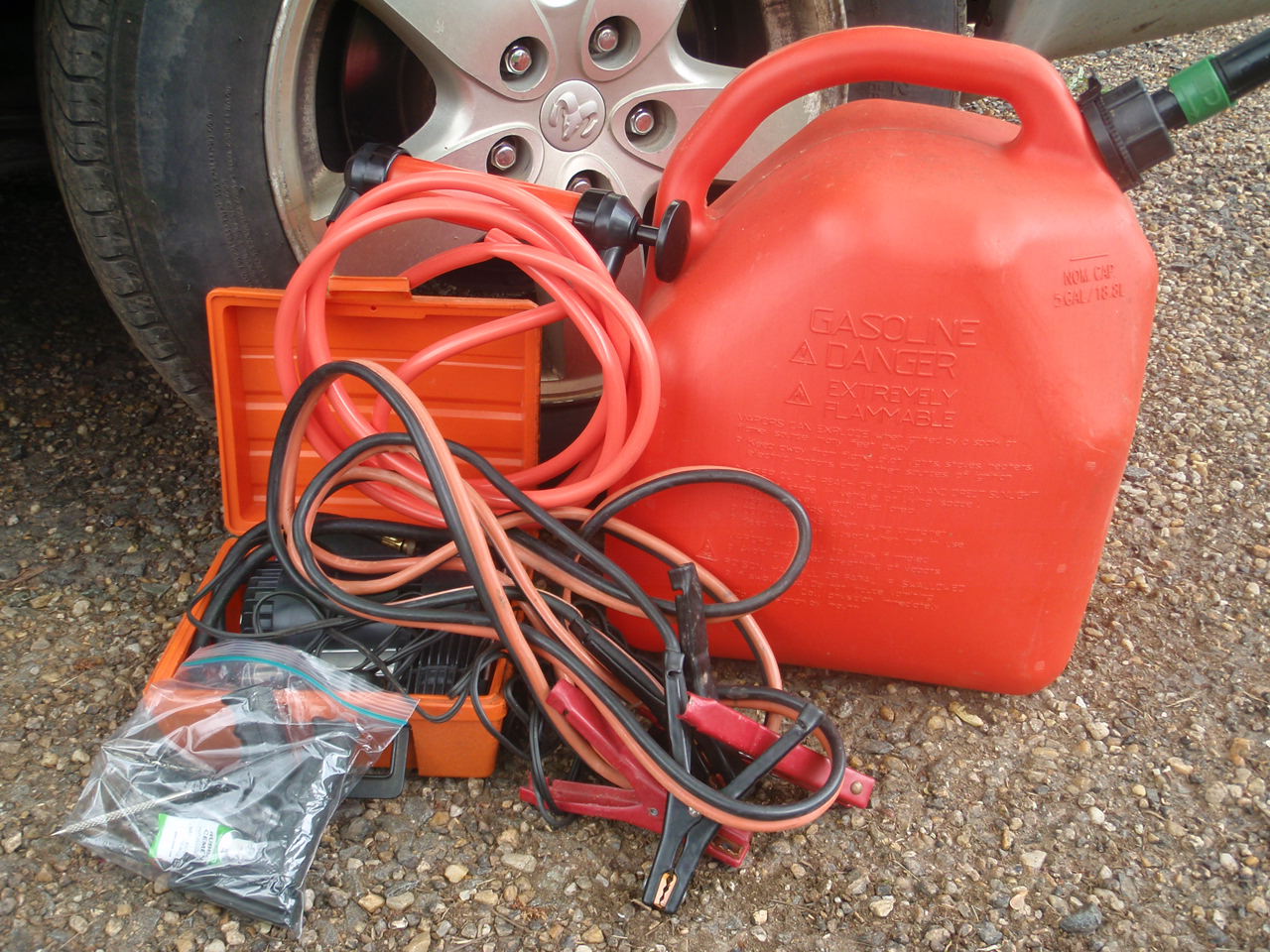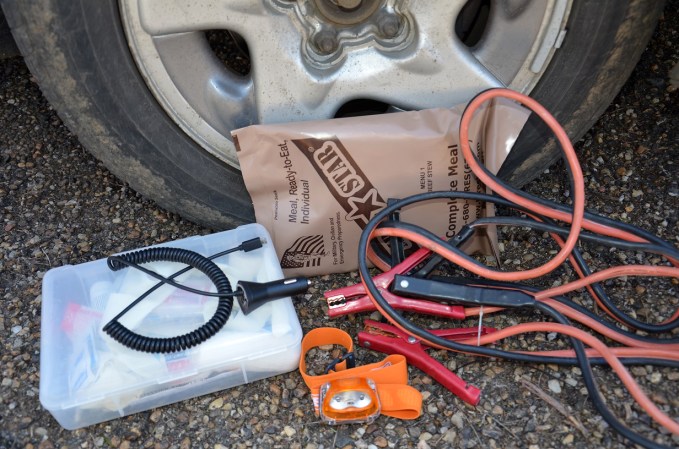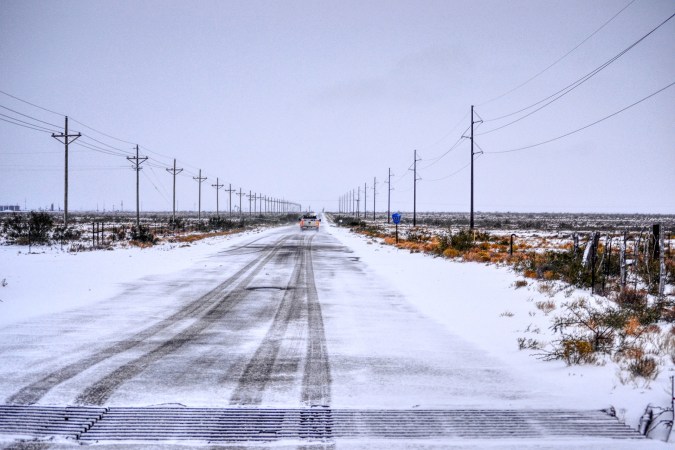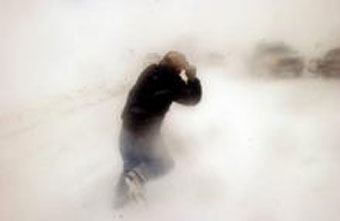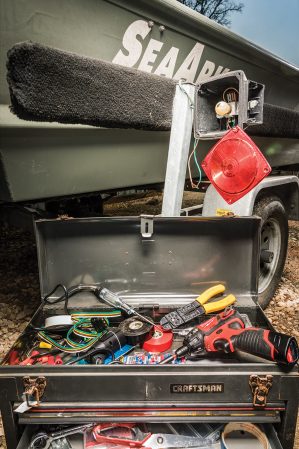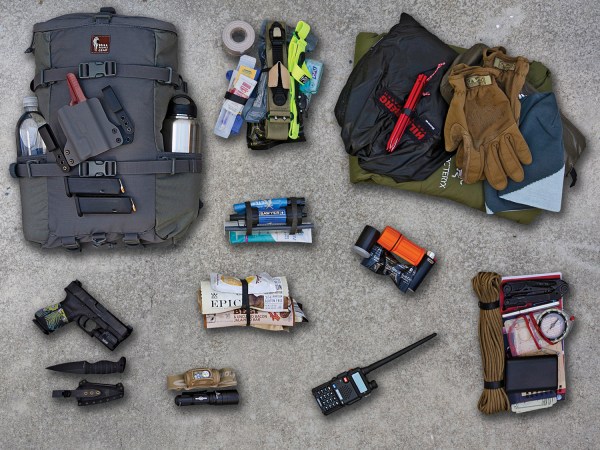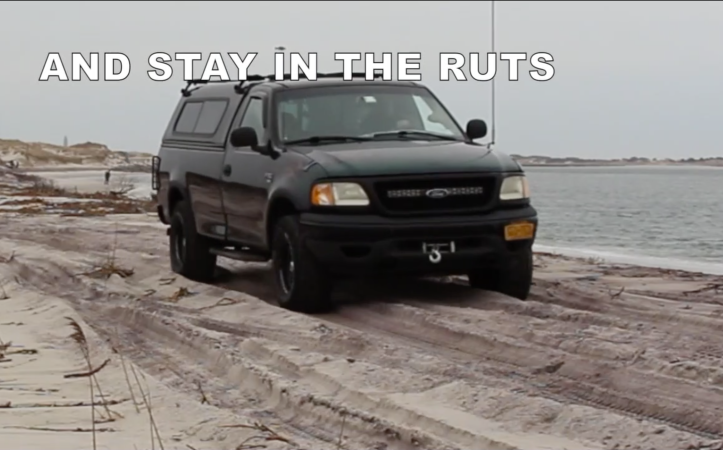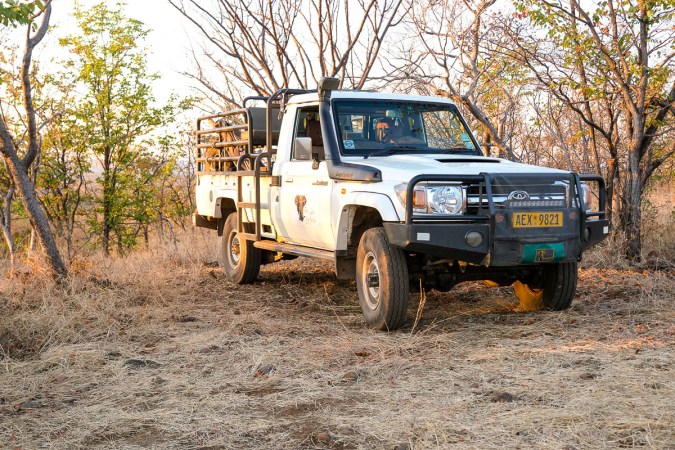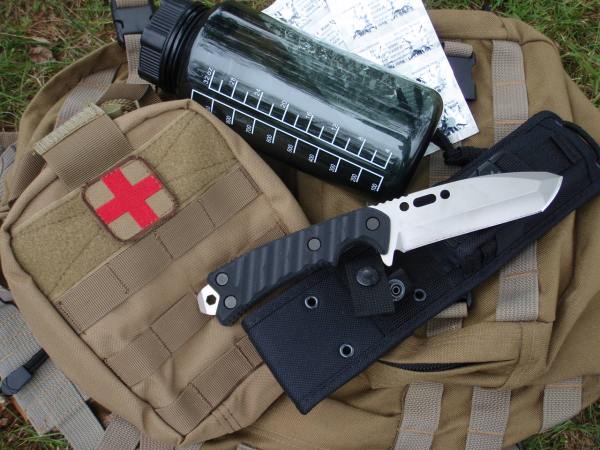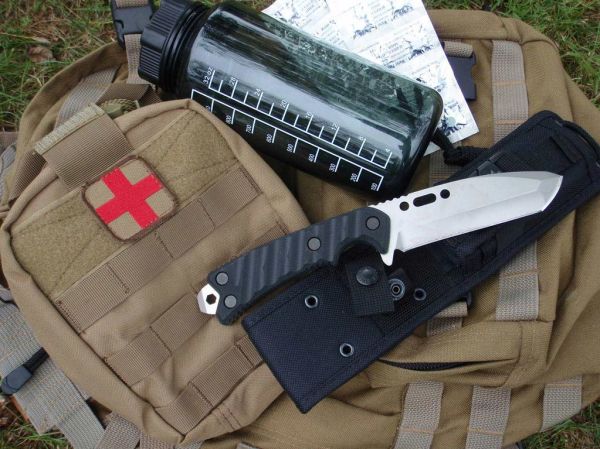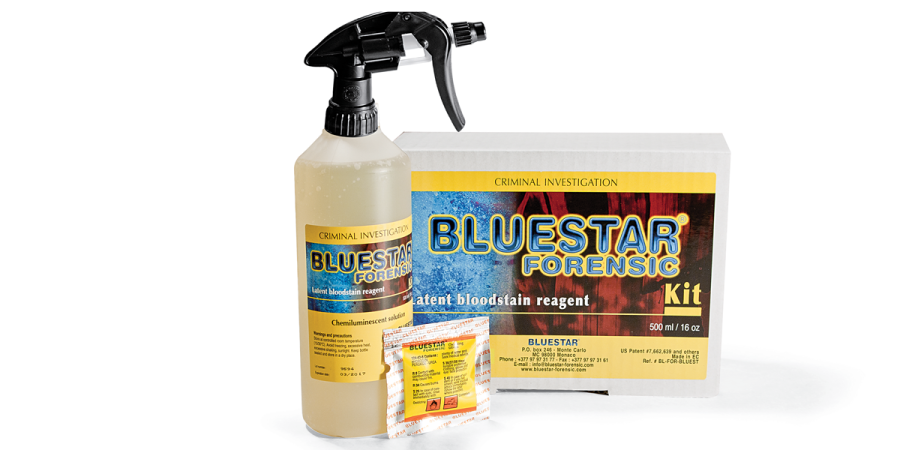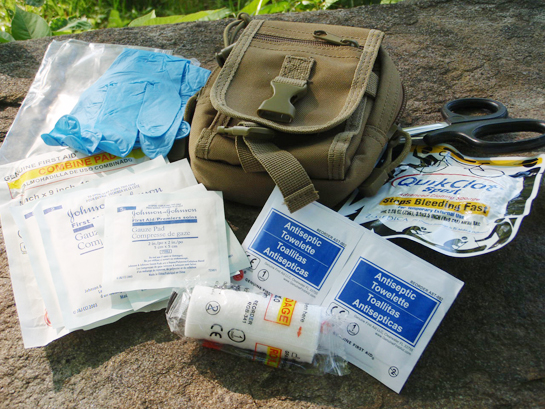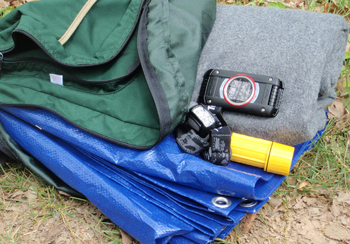We may earn revenue from the products available on this page and participate in affiliate programs. Learn More ›
Long weekend drives and adventurous road trips are a summer tradition for many Americans. As the weather improves and COVID-19 restrictions lift, we are going to feel the itch to roam and explore. This can take us to some pretty remote places where resources (and help) may be extremely limited. If an emergency arises in these out-of-the-way spots, you’ll have to rely on your survival gear and skills. Before you jump in the truck and head off the grid, make sure you have a summer vehicle survival kit ready to go, just in case.
Basic Tool Kit and Phone Charger
You don’t have to be a mechanic to fix simple problems with your rig. But you will need a basic tool kit, which will fit easily below a seat or in the back of your vehicle. If you have a breakdown that’s too catastrophic to fix, you’ll need to call for help. That means you’ll need a fully charged phone. A phone charger seems like such basic piece of gear, but it’s easy to forget items like this when you’re rushing out the door. Keep a working one in your vehicle at all times.
Extra Water
Spare water is a vital resource for any trip off the main roads. In both dry climates and water-rich environments, carrying a stash of drinking water is smart. You may need it for hydration, to fill a leaking radiator, to flush dirt from a wound, or dozens of other uses. It’s also handy to carry water filtration equipment and disinfection supplies (like water filters and disinfection tablets), but you can’t make water appear where there is none. Bring at least one gallon per person and store the water in a way that it won’t cause a problem if it leaks. It’s hard to beat the 5-gallon military water containers.
Flashlight
You’ll want to carry several lights and spare batteries for them. I prefer to diversify the lighting options as well. A bright LED headlamp can give us free hands to work, and a very long battery life (though most don’t reach out with a distant beam). A brighter handheld flashlight (like a tactical light) may be needed to throw a beam of light much farther, and it’s ideal for identifying those “bump in the night” sounds. Your flashlights can also be used to signal for help (along with the headlights of the vehicle). Blinking the lights in sets of three can be a great distress signal. Going further, you can use an “SOS” pattern with three short, three long, and three short flashes. This flashing technique is preferable to leaving the light on, running down the batteries and creating no contrast (a flashing light is more eye catching than a steady light).
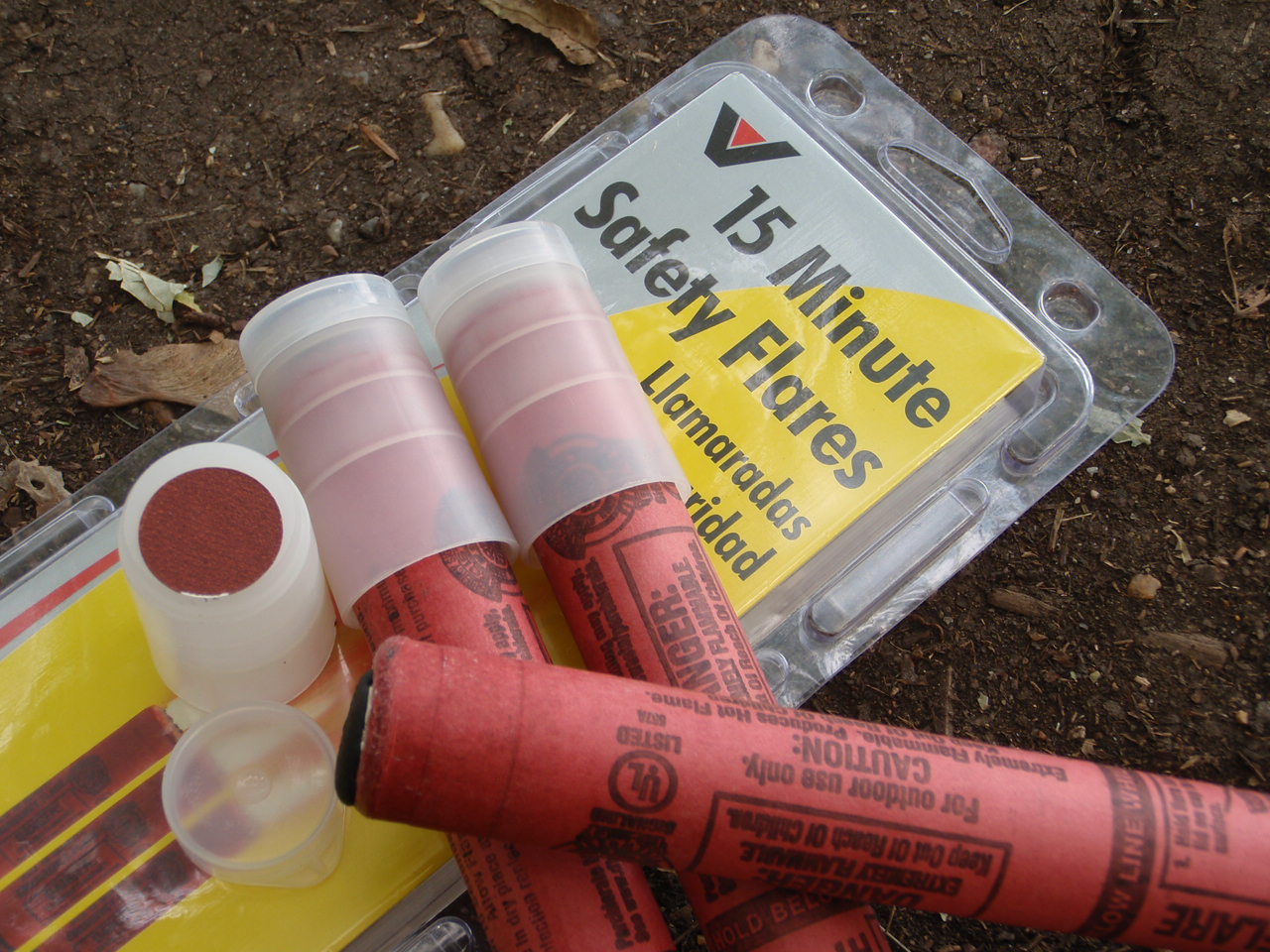
Flares and Reflectors
Road flares are a great item in your vehicle survival kit. Not only are they useful for signaling roadside distress, but they can also be used to start fires for warmth, signaling, boiling and cooking. Don’t just carry one flare. Bring several to give you multiple uses. These aren’t flashlights that you can turn on and off. Once the flare is struck, it will continue burning until it’s burned out or you destroy it somehow (which is not as easy as it sounds). For a more passive roadside application, reflective triangles and other reflectors are also good items for your kit. These can prevent disastrous crashes, especially when your vehicle is stuck in a precarious position on the shoulder of the road.
Jump Your Battery
When your car battery needs a boost, an ordinary pair of jumper cables may seem worth their weight in gold. These won’t help when a battery has discharged too far. However, if the battery is just under the threshold to turn the engine over, a simple jump can solve the problem. Follow the proper procedures when jumping a battery (since you’re dealing with electricity and dangerous battery acid. The cables can also provide you with a strange form of fire making, providing the battery has some juice and you have a wooden pencil and a pocket knife. Carve one side of the pencil down until you hit the graphite. Clamp the cables to the battery, as if jumping it. Then clamp the “hot” side of each set of jaws (the side the cable is attached to) to the pencil so the clamp teeth bite into the graphite. Place the clamps about 2 inches apart on the pencil, and get ready for the smoke and flames.
Extra Food
A few well-chosen treats can do more than just satisfy a snack craving. A stash of food in your vehicle will help you and your passengers maintain morale and keep your energy up. For year-round emergency food stashes, I prefer high calorie food that is shelf stable and requires no cooking. In warmer weather, I’m also going to avoid foods that will melt. A Snickers bar may be a wonderful emergency food item in the winter, but it will be a molten mess after sitting in a hot vehicle in warmer seasons. Many types of canned goods will fit the requirements (I have a particular soft spot for deviled ham). Survival ration bars are a fine alternative since they don’t need cooking and they don’t melt. If these aren’t to your taste (and many people just hate them), then choose your favorite food that meets our criteria: long shelf life, non-melting, no cooking required.
Tow Strap
Forget about dangerous tow chains and hooks. Those can break and cause all kinds of damage to vehicles, equipment and innocent bystanders. You’ll be safer using a strong nylon tow strap, with loops on the ends instead of hooks. This type of product may still break, but it’s much less dangerous to anyone in the vicinity. Be careful when pulling a vehicle out of a ditch or rut. You’ll need a person in each vehicle, ready to hit the brakes if things start to roll out of control.
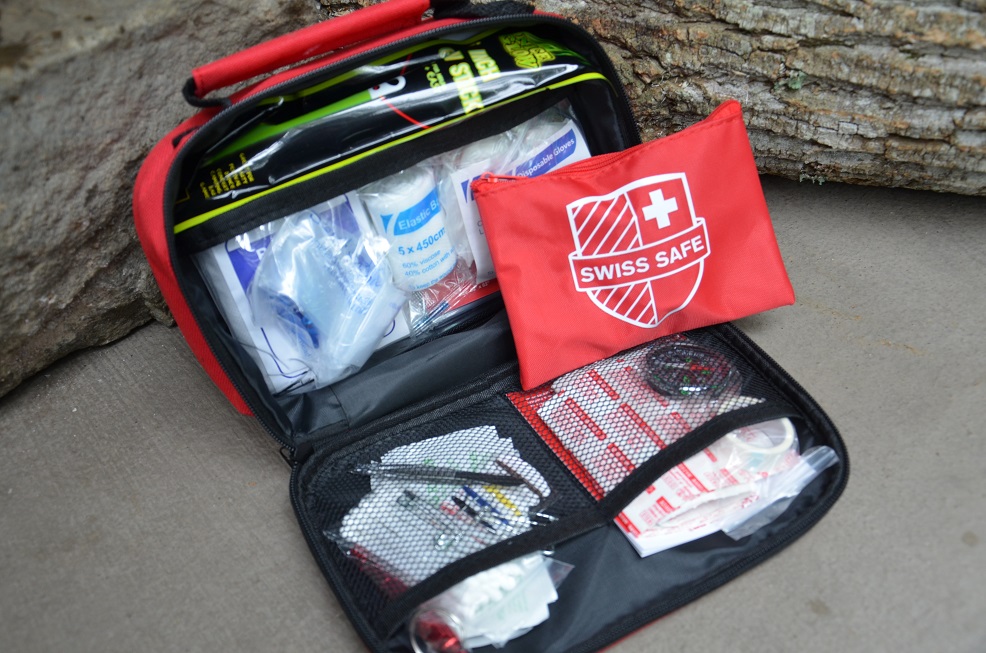
First-Aid Kit
Commercially available first-aid kits can be one of your better investments in “survival” equipment, but don’t feel like a kit is only good if it was assembled in a factory somewhere. You can also build a good kit (or even a phenomenal one) by choosing each piece of gear and each supply item. You’ll want all the typical “boo boo” stuff, like band-aids, gauze, and first aid creams. OTC meds are handy too, such as pain relievers, stomach medicine, antihistamines, itch creams, and the like. Don’t forget the trauma supplies either. EMT shears, larger bandages and dressings, tourniquets, and related supplies should also be added. And to go with your new kit, make sure you get some first aid training from a reputable source.
Read Next: 11 Specialized Survival Kits You Can Build to Live Through Any Disaster
Shelter Items
Your vehicle can act as a form of shelter, which is typically your top survival priority in a backcountry emergency. But blocking the wind and rain isn’t enough. You’ll need warmth when the temperatures drop due to changes in the weather or the normal nighttime lows. Blankets for each seat in the car may suffice for many occasions. These could be fleece or wool, depending on your storage space and budget (wool is bulkier and more expensive). Space blankets are another option. They are cheap and take up very little room, though they are hardly comfortable. Light weight summer sleeping bags might also make sense, as these can be used for camping trips and stored in the vehicle for emergency. Whichever form of “shelter” you choose, just make sure you carry enough items for each possible passenger (so no one has to fight over the blankets when you get stuck somewhere).
Bring The Flat Tire Kit
Where the rubber meets the road, we often run into trouble in the backcountry when we get a flat tire. A full sized spare, tire iron and jack can allow you to swap out one damaged tire. A tire plug kit and an air compressor can allow you to do even more. A large thorn or nail can be pulled out with pliers and plugged with the gummy strands and adhesive. Once set, the air compressor can inflate the tire and you’re back on the trail. This can save the day when you run over a sharp hazard in the road and get two flats on one side of the vehicle.
